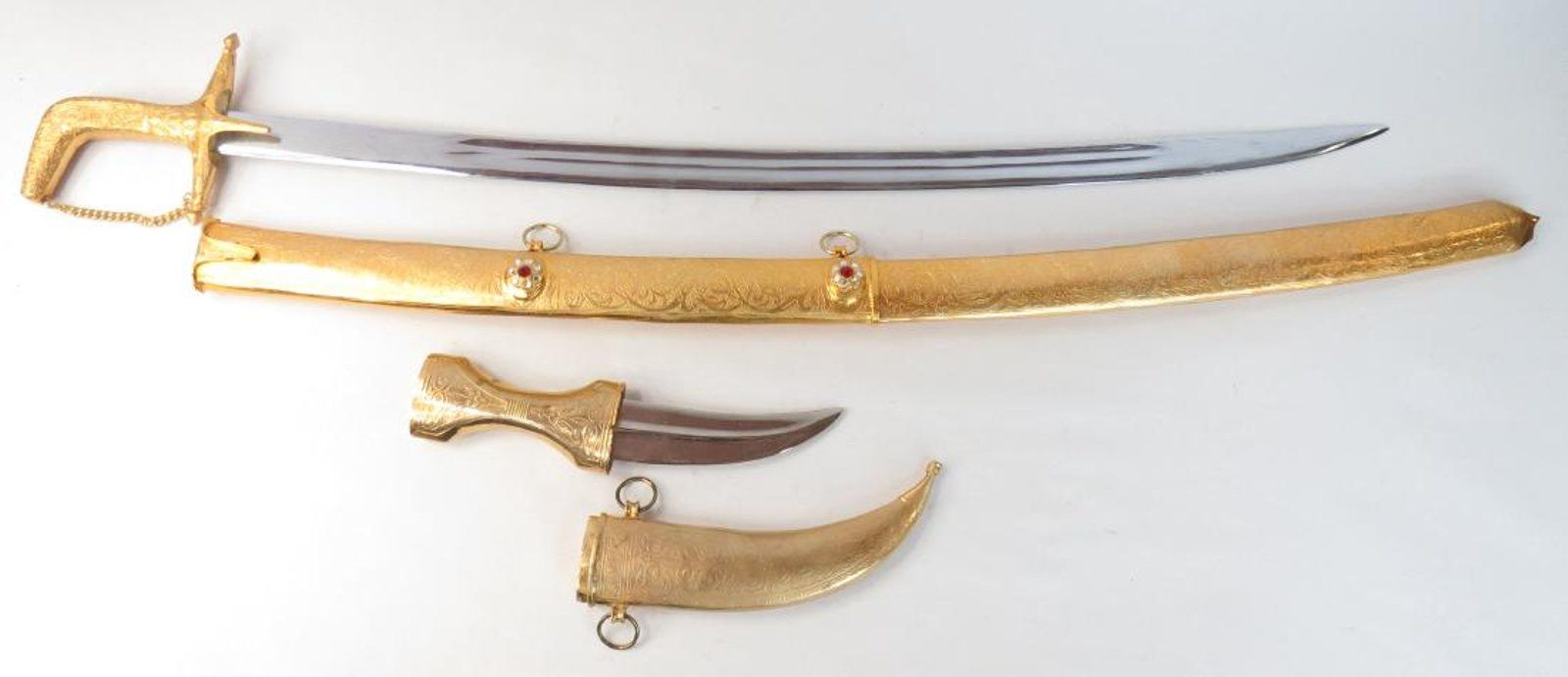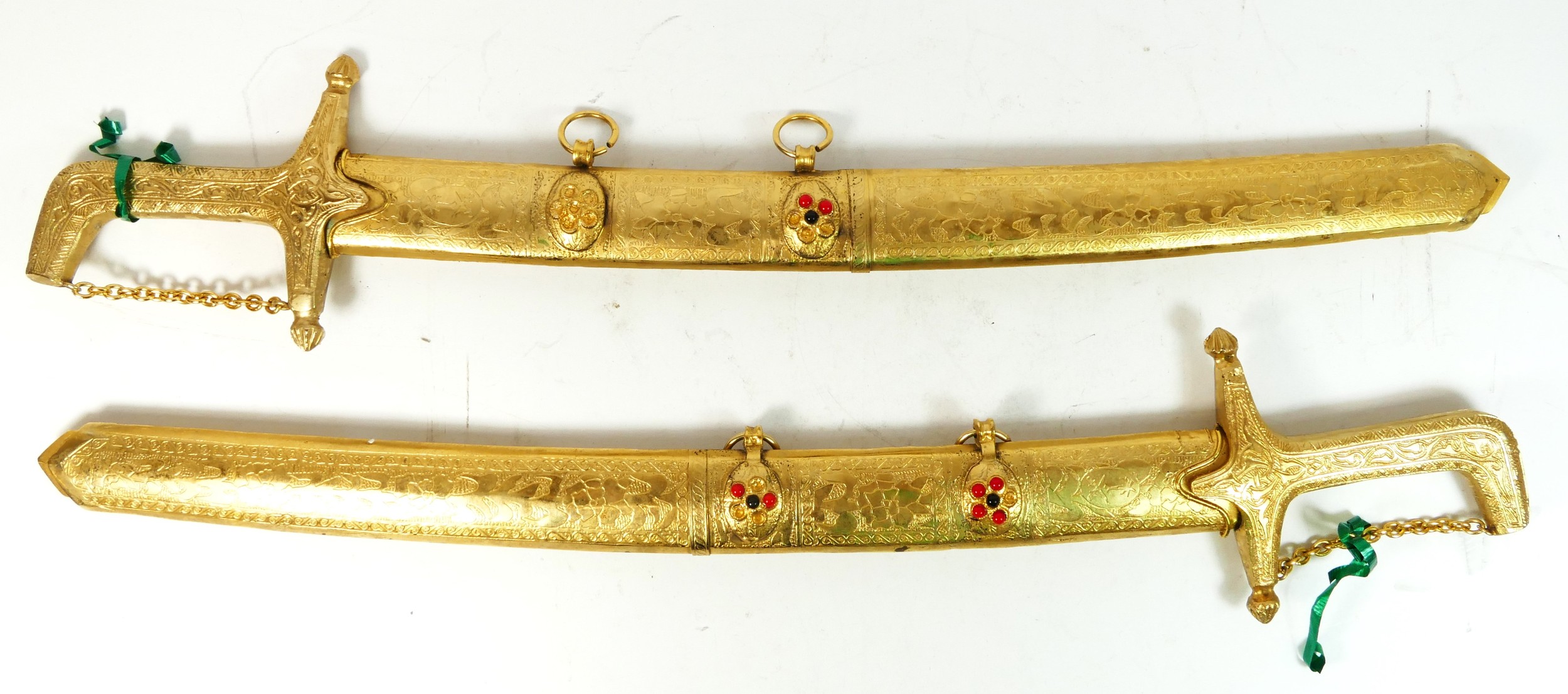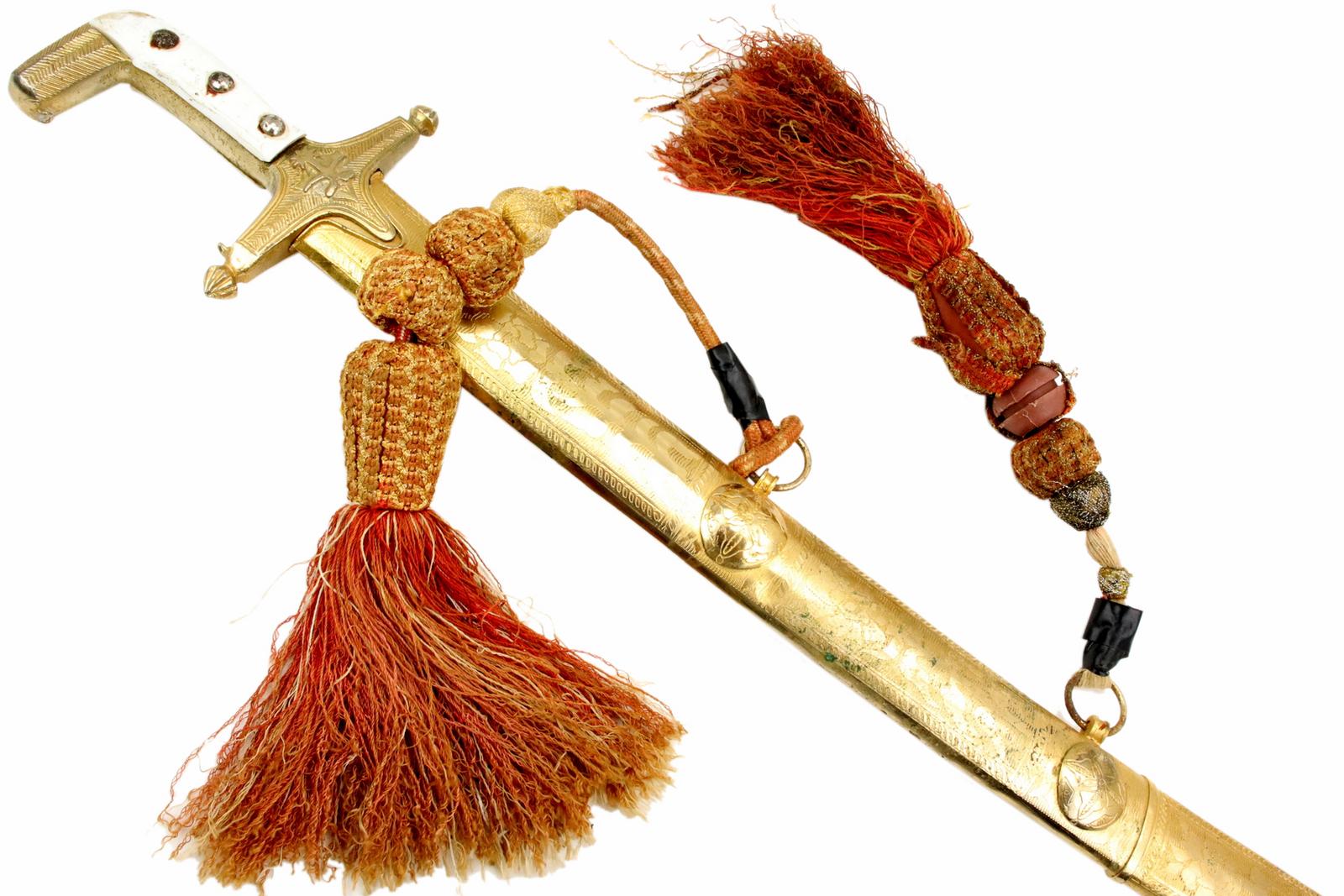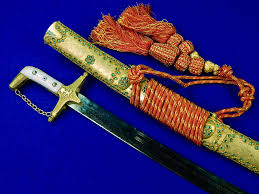전시관 내에서는 이어폰을 이용해주세요.
다문화박물관 사우디 3

Most recognized for its peculiarly hooked pommel, the Arabian saif was one of the most fearsome swords in history. The Arabian Muslims were the founders of one of the great empires and used swords to conquer territories and spread Islam. Let us explore the history of the Arabian saif and what makes it unique among the other types of Islamic swords.
Characteristics of the Arabian Sword
Found in countries the Arabs have lived in, the saif varied in appearance throughout Islamic history. Here are the unique qualities of the Arabian sword:
Type of Metal
The art of weapon making among the Arabs only developed after Indian steel was imported to the region. The ancient Indian steel was called the wootz steel, a high grade of carbon steel consisting of around 1 to 1.6 percent carbon. Swordsmiths also forged swords from steel imported from Serendib—modern-day Sri Lanka.
There were two kinds of Arabian swords based on metal: the saif anith, a blade made of iron, and the saif fulath or muzakka, a blade forged from steel.
Natural or Mined Iron
Swordsmiths used natural or mined iron and non-natural or manufactured iron in forging the swords. The mined iron has two types: the shaburqan and narmahin. The former is the hard iron that can be heat treated while the latter cannot. However, the iron lacked the hardness and solidity of steel blades.
Manufactured Iron or Steel
A manufactured iron is basically steel or fuladh, which means it is purified or refined. Bladesmiths added some ingredients to decrease the softness of the natural iron until it became flexible for heat treatment.
Local Iron or Steel
Some of the Arabian types of swords swords were native and forged from local iron. The Damascene was the iron produced and forged at Damascus, Syria, while the Khurasani originated from Khurasan—the modern-day region lying in northern Afghanistan, southern Turkmenistan, and northeastern Iran. When the Arabs conquered Egypt, the country served as a center for sword production.
Damascus Steel
The Arabian swords forged from manufactured steel generally show the watery pattern called firind or jawhar, which is the characteristic of Damascus steel. Steel swords forged from the Indian wootz steel also show the fancy firind pattern.
The pattern is the effect of the incomplete mixing of two components of steel in the crucible, which is the narmahin or soft iron and its water called dus. Comparatively, swords forged from natural steel won’t have the patterns.
Blade Shape
The early Arabian swords were straight but later evolved into the broad-bladed and slightly curved saber we know today. The sabre is slightly-curved and sharpened only on one side of the blade. As a saber type of sword, the saif served as a slashing weapon and was suited to making draw-cut blows. Some Arabian swords feature fuller or blood grooves while others do not.
Size and Length
Although the size and length of the Arabian sword varied greatly, most examples have an overall length of around 90 centimeters.
Sword Mounting
Often carved from a solid piece of wood, the hilt of the Arabian sword is called miqbad, which features a hooked pommel or halq. Worn originally slung from a shoulder belt, the Arabs later carried their sword on a waist belt through the rings on its scabbard.
Characteristics of the Arabian Sword
Found in countries the Arabs have lived in, the saif varied in appearance throughout Islamic history. Here are the unique qualities of the Arabian sword:
Type of Metal
The art of weapon making among the Arabs only developed after Indian steel was imported to the region. The ancient Indian steel was called the wootz steel, a high grade of carbon steel consisting of around 1 to 1.6 percent carbon. Swordsmiths also forged swords from steel imported from Serendib—modern-day Sri Lanka.
There were two kinds of Arabian swords based on metal: the saif anith, a blade made of iron, and the saif fulath or muzakka, a blade forged from steel.
Natural or Mined Iron
Swordsmiths used natural or mined iron and non-natural or manufactured iron in forging the swords. The mined iron has two types: the shaburqan and narmahin. The former is the hard iron that can be heat treated while the latter cannot. However, the iron lacked the hardness and solidity of steel blades.
Manufactured Iron or Steel
A manufactured iron is basically steel or fuladh, which means it is purified or refined. Bladesmiths added some ingredients to decrease the softness of the natural iron until it became flexible for heat treatment.
Local Iron or Steel
Some of the Arabian types of swords swords were native and forged from local iron. The Damascene was the iron produced and forged at Damascus, Syria, while the Khurasani originated from Khurasan—the modern-day region lying in northern Afghanistan, southern Turkmenistan, and northeastern Iran. When the Arabs conquered Egypt, the country served as a center for sword production.
Damascus Steel
The Arabian swords forged from manufactured steel generally show the watery pattern called firind or jawhar, which is the characteristic of Damascus steel. Steel swords forged from the Indian wootz steel also show the fancy firind pattern.
The pattern is the effect of the incomplete mixing of two components of steel in the crucible, which is the narmahin or soft iron and its water called dus. Comparatively, swords forged from natural steel won’t have the patterns.
Blade Shape
The early Arabian swords were straight but later evolved into the broad-bladed and slightly curved saber we know today. The sabre is slightly-curved and sharpened only on one side of the blade. As a saber type of sword, the saif served as a slashing weapon and was suited to making draw-cut blows. Some Arabian swords feature fuller or blood grooves while others do not.
Size and Length
Although the size and length of the Arabian sword varied greatly, most examples have an overall length of around 90 centimeters.
Sword Mounting
Often carved from a solid piece of wood, the hilt of the Arabian sword is called miqbad, which features a hooked pommel or halq. Worn originally slung from a shoulder belt, the Arabs later carried their sword on a waist belt through the rings on its scabbard.
00:00
01:50
08
다문화박물관 사우디 3




